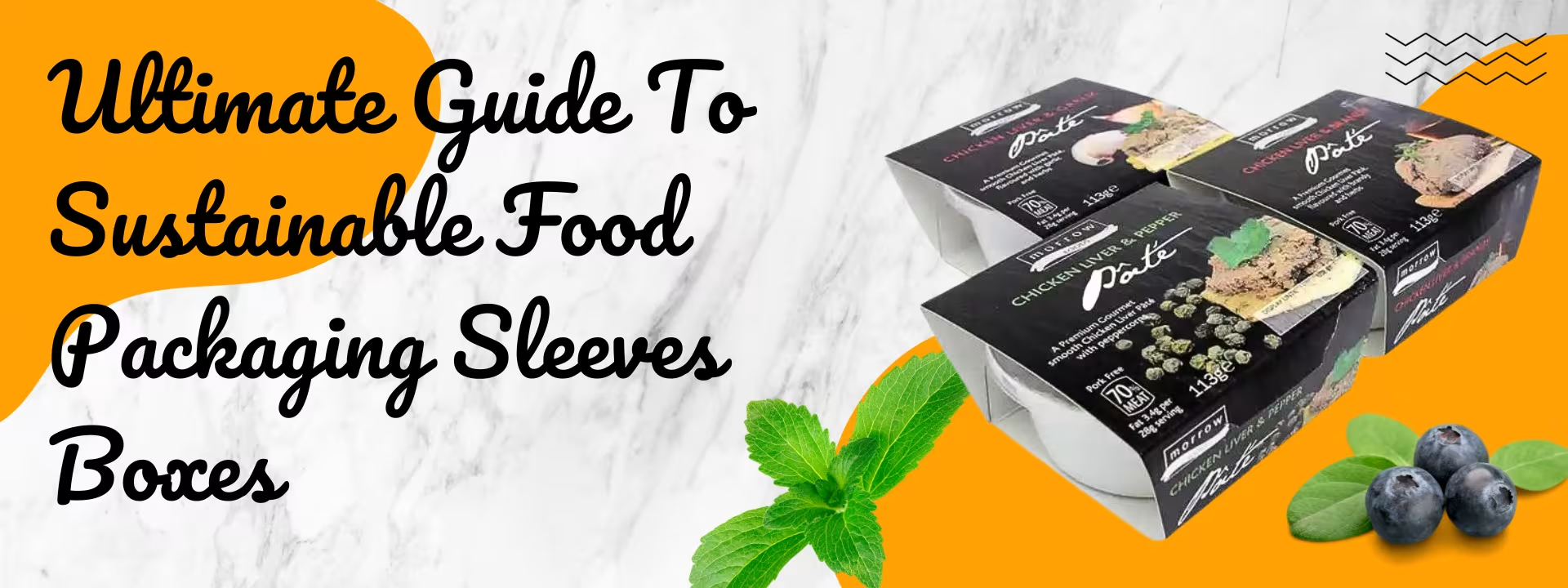


In the ever-evolving landscape of sustainable practices, sustainable Food Packaging Sleeves boxes have emerged as a crucial player, embodying the commitment of businesses towards eco-friendly solutions. As stewards of the environment, we understand the imperative to not only provide top-notch packaging solutions but to do so responsibly. In this comprehensive guide, we delve into the intricate world of sustainable Food Packaging Boxes, unraveling their benefits, manufacturing processes, and the pivotal role they play in the global shift towards sustainable packaging.
Sustainable packaging has become more than just a buzzword; it is a paradigm shift in the way businesses operate. Consumers today are environmentally conscious, demanding products that not only meet their needs but also align with their values. Sustainable food packaging sleeves boxes are at the forefront of this movement, addressing environmental concerns without compromising on functionality.
Environmental Impact: One of the primary advantages lies in the reduced environmental footprint. These boxes are crafted from materials that are recyclable, biodegradable, and often made from post-consumer recycled content, minimizing waste and contributing to a circular economy.
Brand Image Enhancement: Adopting sustainable packaging reflects positively on a brand's image. Companies embracing eco-friendly practices not only attract environmentally conscious consumers but also position themselves as responsible industry leaders.
Regulatory Compliance: With an increasing focus on environmental regulations, sustainable food packaging sleeves boxes ensure compliance with stringent standards. This not only safeguards businesses from legal complications but also demonstrates a commitment to ethical business practices.
Understanding the intricacies of manufacturing processes is crucial in the pursuit of sustainable packaging solutions.
1. Materials Used
Recycled Cardboard: The use of recycled cardboard is a cornerstone in sustainable food packaging sleeves box manufacturing. By repurposing post-consumer waste, companies contribute to resource conservation and energy savings while maintaining packaging integrity.
Biodegradable Plastics: Innovations in materials have led to the integration of biodegradable plastics in packaging sleeves. These materials break down naturally, reducing the environmental impact associated with traditional plastics.
The printing industry has also undergone transformations to align with sustainability goals. Water-based inks and soy-based inks are eco-friendly alternatives, minimizing harmful emissions and reducing the use of volatile organic compounds (VOCs).
When selecting Packaging Solutions, businesses should consider several factors to ensure a seamless transition to sustainable practices.
Sustainable packaging sleeves offer a myriad of customization options, allowing businesses to maintain brand identity while contributing to environmental conservation.
Contrary to common misconceptions, investing in sustainable food packaging sleeves can be cost-effective in the long run. Reduced waste management costs and positive brand perception often outweigh initial expenses.
As we move forward, the trajectory of sustainable packaging sleeves is poised for continued growth. Industry leaders anticipate advancements in materials and manufacturing processes, further enhancing the sustainability quotient of these packaging solutions.
In conclusion, the era of sustainable food packaging sleeves boxes is upon us. Embracing these eco-friendly alternatives not only aligns with consumer values but also positions businesses as responsible entities in the global marketplace. The benefits, from reduced environmental impact to enhanced brand image, make the transition to sustainable packaging an imperative for businesses aiming to thrive in the future.